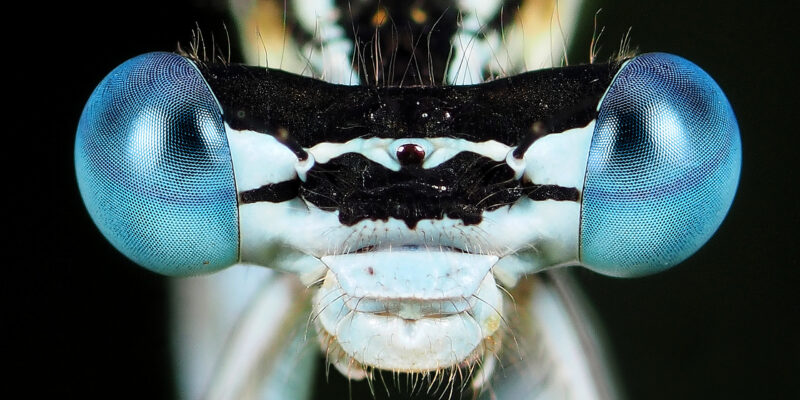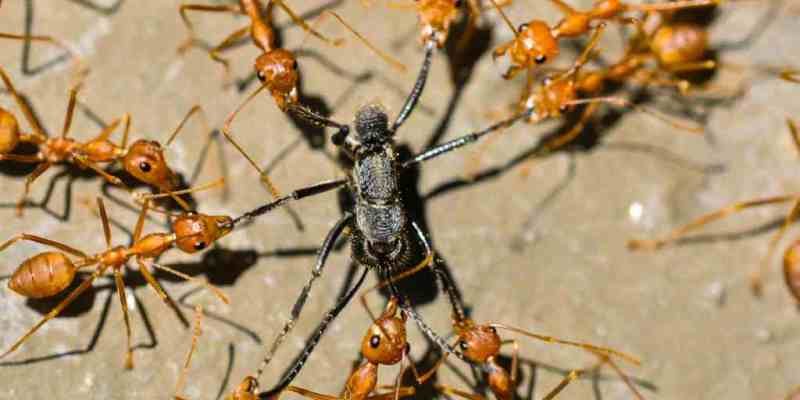Systematic Entomology is a Royal Entomological Society journal that focuses on publishing research papers concerning insect systematics, phylogenetics, and integrative taxonomy.
This journal seeks contributions with broad biological, evolutionary, or zoogeographical significance, making it particularly appealing to researchers interested in arthropods, biogeography, entomology, evolutionary biology, and insect-related topics. Descriptive morphology, phylogeny, systematics, and taxonomy are among the key areas covered, providing a comprehensive platform for advancing the understanding of insect diversity and evolution.

Winner Volume 46, 2021:
Dominic A Evangelista for leading on Assessing support for Blaberoidea phylogeny suggests optimal locus quality
The lead author of this impressive phylogenomic study was an early-career scientist at the time of publication. The paper provided a robust evolutionary hypothesis for a large superfamily in one of the so-called ‘minor’ orders that tend to be understudied.

The judges noted:
“This study was selected because it went far beyond a standard set of modern phylogenomic analyses.
Specifically, Evangelista et al. investigated phylogenetic information content of subsampled loci and provided insights into desirable properties of loci for phylogenomic inference that could be useful for studies beyond this particular taxonomic group.”
Dominic is an evolutionary biologist interested in how biodiversity originates through evolutionary processes. He is one of the few world specialists on cockroach systematics, and has studied mostly the fauna of South America.
His current research aims to infer phylogenies using genome-scale data, map biological trends over evolutionary histories, and improve upon phylogenetic methods. In addition to inferring their phylogeny, he is also interested in cockroach biodiversity, their importance in tropical ecosystems, and molecular tools for biodiversity monitoring.
This study aimed to address the relationships among the families of Blaberoidea with genome-scale data.

When describing his work, Dominic said,
“To collect our data, we used a technique that targets hundreds of genes and sequences them all at once. Doing this, we could accomplish joint aims: learn about our organisms evolutionary history while also learning how to more effectively leverage targeted sequencing techniques like the one we used. These aims also complemented each other and our results were more robust as a result.
The empirical results supported the creation of a new subfamily and a new tribe of cockroaches, in addition to resolving many relationships between the families. For our other aims, we identified some characteristics of genes that could vastly improve the efficiency of data collection and analysis for phylogenetic studies.”
His recent research (Evangelista et al. 2024) has corroborated much of these findings and also builds significantly upon this prior work.

Winner Volume 47, 2022:
Mukta Joshi for research presented in Delimiting continuity: Comparison of target enrichment and double digest restriction-site associated DNA sequencing for delineating admixing parapatric Melitaea butterflies
This study was led by an early-career researcher and focuses on the issue of delimitation of parapatric species by comparing two original genomic-scale datasets, a ddRAD and a target enrichment dataset, in their usefulness to resolve the relationships of two parapatric Melitea butterfly species.

The judges said
“we’re delighted to award the prize to Mukta because of its carefully enacted methodology, insightful results and recommendations for the delimitation of species in parapatry, and its excellent writing style.”
Mukta’s academic journey has been driven by a deep fascination for biodiversity and the evolutionary processes that generate and maintain it. After completing her undergraduate studies at Indian Institute of science Education and Research (IISER), Pune in India, she joined Prof. Marko Mutanen’s group at University of Oulu for her PhD. Her doctoral research focused on resolving taxonomic challenges in different groups of butterflies and moths, employing genomic approaches to investigate species boundaries and relationships among closely related species and populations with parapatric and allopatric distributions.
Mukta said,
“My future career aspirations broadly center around various aspects of speciation research, particularly understanding factors that drive speciation in closely related diverging taxa that are yet to be fully differentiated. I’m especially excited by the potential of genomics to unravel these evolutionary mysteries.”
Species delimitation (the process of categorizing biodiversity) is a key aspect of taxonomy but often challenging because of several reasons including disagreement regarding the way we define species and the gradual accumulation of divergence causing many taxa to fall into a ‘grey zone’, where their taxonomic status is uncertain.


This article tackles species delimitation in one such system – Melitaea athalia and Melitaea celadussa.
The two species are known to have a parapatric distribution pattern, i.e., their ranges overlap narrowly and form a contact zone where they may exchange genes.
Mukta summarised the article by saying,
“we compared two commonly used genomic approaches – target enrichment and ddRAD for their utility in species delimitation in Melitaea. We found that the two methods consistently gave identical results across most of the analyses, but target enrichment offers an advantage due to low missing data and fixed set of loci that could be standardized for species delimitation. Finally in the article we also provide recommendations for delimitation of species under parapatric scenarios characterized by a significant gene flow such as Melitaea, and the possible drawbacks of these solutions.”

Winner Volume 48, 2023:
Víctor Noguerales for the article Image-based taxonomic classification of bulk insect biodiversity samples using deep learning and domain adaptation
This research integrated high-resolution images and machine learning to assess the efficiency of domain adaptation to the family-level identification of beetle specimens from bulk insect samples from unknown communities.

The judges commented:
“The paper was co-first authored by an early career researcher who significantly contributed to all aspects of the research.
It was chosen due to its innovative study design and methodology, and its contributions to the field of biodiversity research.”
“Insects have attracted my attention from a long time ago,” said Víctor, “particularly grasshoppers and beetles from mountain and island ecosystems.”

Using these biotas as a study model, his research aims to understand the mechanisms generating biological diversity. Integrating genomic and ecological data with demographic modelling and artificial intelligence is paramount for developing his investigations, which lie at the intersection of population genetics, community ecology, and phylogenomics. He received my PhD (2017) from the University of Castilla-La Mancha (Spain) and later acquired postdoctoral experience at national and international institutions (University of Cyprus, and IPNA–Canary Islands).
He has conducted internships in top-ranked institutions, including the University of Michigan (USA) and the Natural History Museum (London). Now, he is developing his research at the University of La Laguna (Tenerife) as a ‘Viera & Clavijo’ researcher, a position that is providing him with the opportunity to start running a laboratory as a team leader.
Biodiversity of insects is threatened worldwide. Initiatives for describing its diversity and dynamics constitute a global top priority.
Yet modern taxonomy is facing a critical challenge in studying highly diverse biotas from underexplored ecosystems, which may harbour countless undescribed taxa.

Víctor outlined his research article by saying,
“we assess the efficiency of artificial intelligence (AI) for taxonomic classification of beetle images from massive biodiversity surveys. Our results highlight the power of this approach to accurately classify at family-level a collection of local images (Cyprus) using a model trained with worldwide images from tropical beetles. Yet this approach is not exempt from challenges, due to the imaging procedure, the algorithm used and how the model is trained can lead to accuracy reduction and classification failures. We envisage the increasing availability of global collections of standardized images and refined AI methods will facilitate the rapid and effective characterization and monitoring of insect communities facing global change.”





